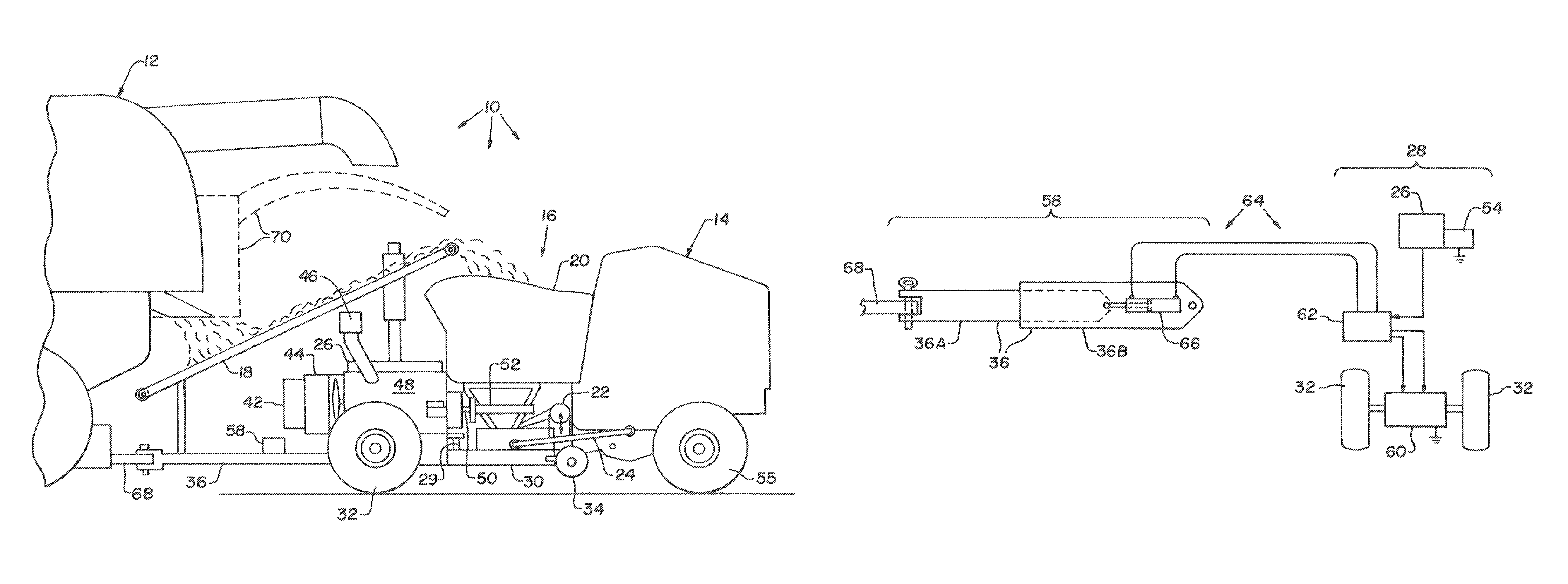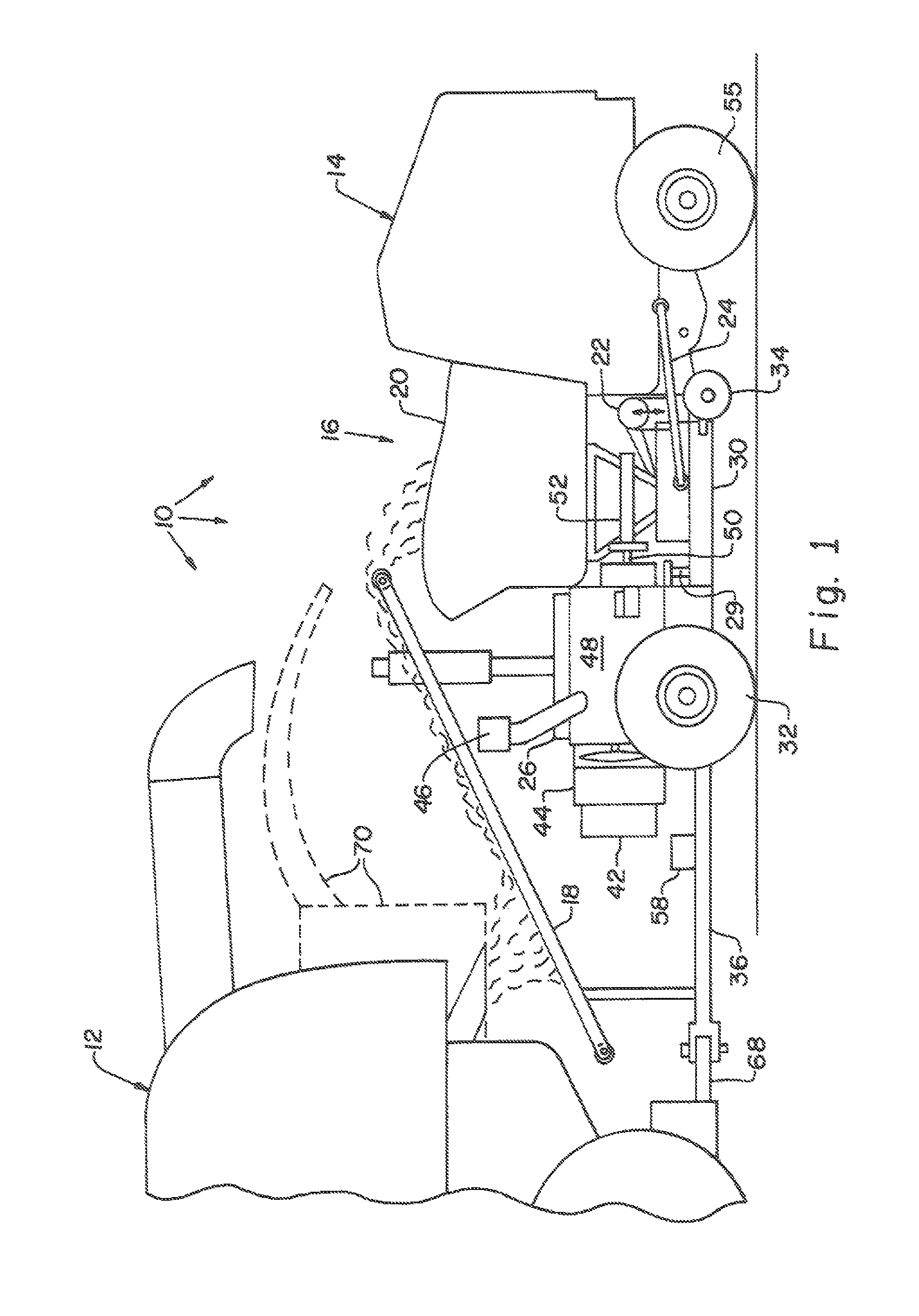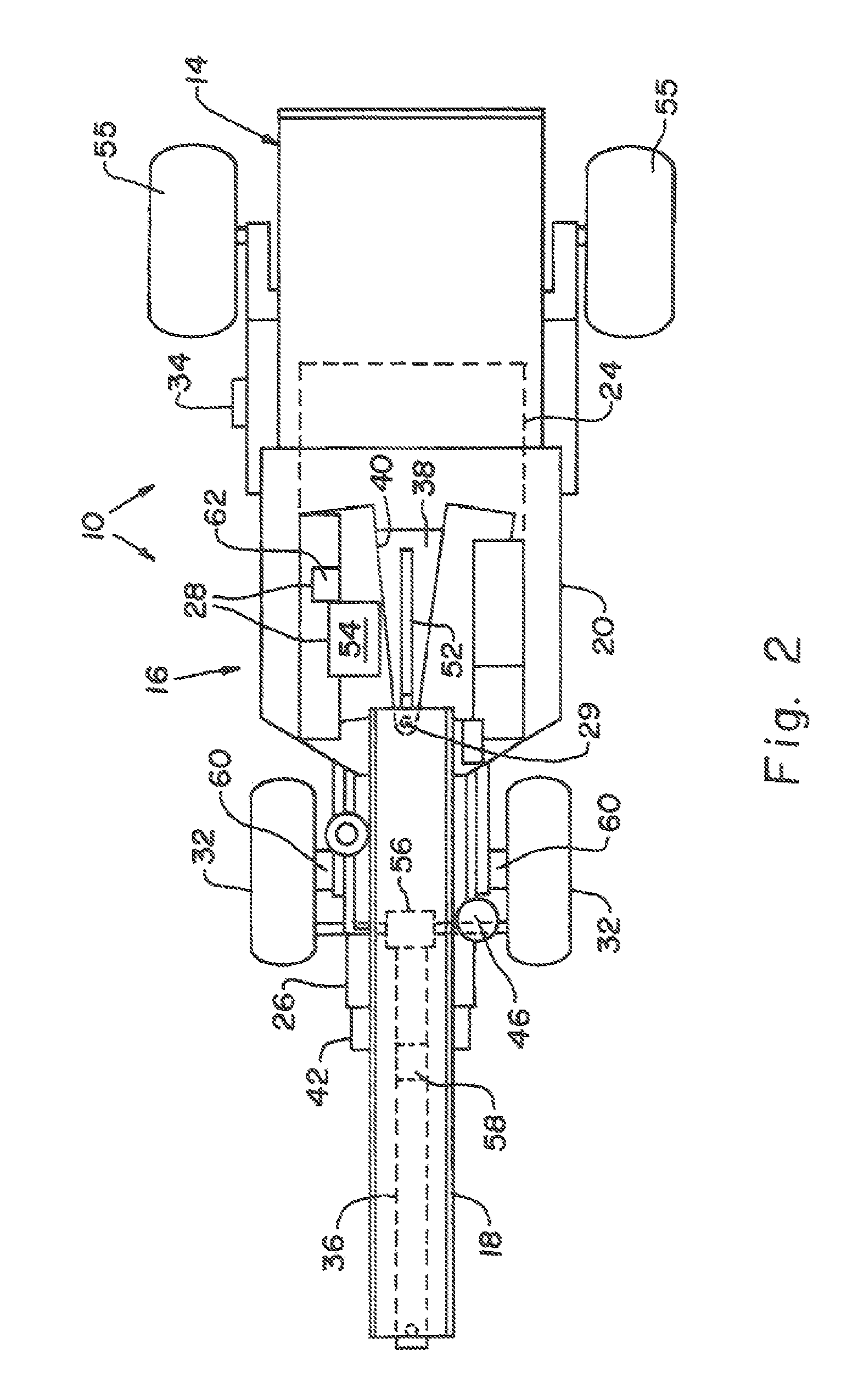Tugger and accumulator for use with an agricultural biomass harvester
a biomass harvester and accumulator technology, applied in the field of agricultural biomass harvesters, can solve the problems of limiting corn cob production, affecting the speed of grain harvesting, and affecting the proportion of highly valuable corn cobs
- Summary
- Abstract
- Description
- Claims
- Application Information
AI Technical Summary
Benefits of technology
Problems solved by technology
Method used
Image
Examples
Embodiment Construction
[0019]Referring now to the drawings, there is shown an embodiment of an agricultural harvesting system 10, which generally includes a primary harvester 12, biomass harvester 14, and T / A 16. Primary harvester 12 is shown in the form of a combine, and only a rear portion of the combine is shown in fragmentary form for simplicity's sake. Primary harvester 12 could be a different type of harvester, such as a sugar cane harvester, etc. Primary harvester 12 defines a primary source of motive power of agricultural harvesting system 10 through a field in which agricultural harvesting occurs.
[0020]Biomass harvester 14 is shown as a round baler, and, in particular, a John Deere 568 round baler. However, biomass harvester 14 could be configured as a different type of biomass harvester, such as a large square baler, a modified silage wagon or cart, etc. Biomass harvester 14 defines a secondary implement which is towed behind primary harvester 12 (or primary implement) through the field during a...
PUM
 Login to View More
Login to View More Abstract
Description
Claims
Application Information
 Login to View More
Login to View More - R&D
- Intellectual Property
- Life Sciences
- Materials
- Tech Scout
- Unparalleled Data Quality
- Higher Quality Content
- 60% Fewer Hallucinations
Browse by: Latest US Patents, China's latest patents, Technical Efficacy Thesaurus, Application Domain, Technology Topic, Popular Technical Reports.
© 2025 PatSnap. All rights reserved.Legal|Privacy policy|Modern Slavery Act Transparency Statement|Sitemap|About US| Contact US: help@patsnap.com



